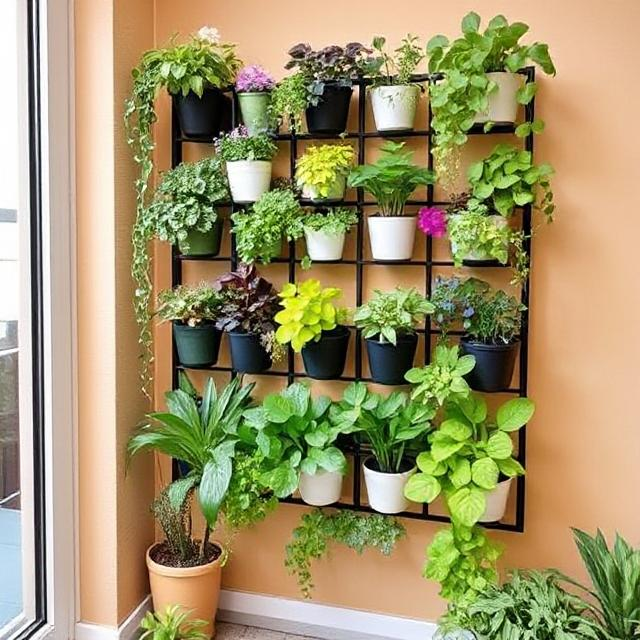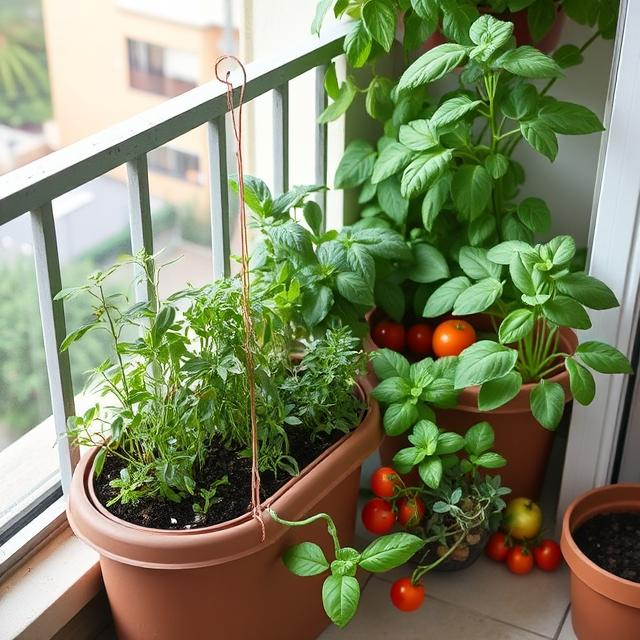In today’s fast-paced urban life, fresh and organic food is becoming a luxury. With limited space and increasing pollution, many people believe growing their own food is impossible. However, urban gardening is transforming this idea. Whether you live in an apartment, have a small balcony, or just a windowsill, you can start growing your own vegetables, herbs, and even fruits.
This guide will take you through the essentials of urban gardening, the best plants to grow in small spaces, and practical tips to maximize your harvest.
Benefits of Urban Gardening
1. Healthier and Fresher Food
Homegrown vegetables and herbs are pesticide-free, fresh, and full of nutrients, unlike store-bought ones that may contain harmful chemicals.
2. Saves Money
Growing your own food reduces grocery bills. A small investment in seeds, soil, and containers can yield an abundance of produce over time.
3. Environmental Impact
Urban gardening reduces carbon footprint by minimizing transportation, packaging, and waste. Plants also improve air quality and reduce city heat.
4. Therapeutic and Stress-Relieving
Gardening is a natural stress reliever. Studies show that interacting with plants boosts mood, reduces anxiety, and improves mental health.
5. Efficient Use of Space
Even in the smallest areas, you can grow food vertically, in hanging baskets, or using hydroponic systems.
How to Start an Urban Garden in Small Spaces

Step 1: Choose the Right Location
Look for a spot with at least 4-6 hours of sunlight daily. It could be a balcony, rooftop, window ledge, or even your kitchen counter. If sunlight is limited, use LED grow lights.
Step 2: Select the Right Containers
Depending on space, you can use:
- Pots and Planters – Ideal for tomatoes, peppers, and herbs.
- Hanging Baskets – Great for strawberries and trailing plants.
- Vertical Gardens – Use wall planters or stack pots to maximize space.
- Hydroponics or Aquaponics – A soilless method that is great for leafy greens.
Step 3: Pick Easy-to-Grow Plants
For beginners, choose plants that thrive in small spaces and require minimal care:
Vegetables:
- Leafy Greens – Lettuce, spinach, kale
- Tomatoes – Cherry tomatoes grow well in containers
- Peppers – Bell peppers and chili peppers
- Carrots and Radishes – Perfect for deep pots
Herbs:
- Basil – Needs warmth and sunlight
- Mint – Grows rapidly in containers
- Coriander & Parsley – Ideal for window sills
- Thyme & Oregano – Hardy herbs for cooking
Fruits:
- Strawberries – Grow well in hanging baskets
- Lemons & Oranges – Small citrus trees thrive in pots
- Figs & Pomegranates – Compact fruit trees for balconies
Step 4: Use Quality Soil and Organic Fertilizers
- Use lightweight, well-draining soil with organic compost.
- Add coconut coir or perlite to improve aeration.
- Fertilize with kitchen waste compost, banana peels, eggshells, or fish emulsion for natural nutrients.
Step 5: Water Wisely
- Overwatering is a common mistake. Water only when the top inch of soil is dry.
- Use a self-watering container or a drip irrigation system for efficient watering.
Step 6: Pest Control Without Chemicals
- Neem oil spray repels insects naturally.
- Use companion planting (e.g., planting marigolds with vegetables) to deter pests.
- Regularly check for pests and remove them manually.
Maximizing Space with Smart Techniques

1. Vertical Gardening
Use wall-mounted planters, trellises, and stacked shelves to grow more in less space. Climbing plants like beans, cucumbers, and gourds thrive in vertical gardens.
2. Hydroponics and Aquaponics
Hydroponics allows plants to grow without soil, using nutrient-rich water. Aquaponics combines fish farming with plant growth for a sustainable system.
3. Companion Planting
Certain plants grow better together. For example:
- Tomatoes + Basil – Basil repels pests that attack tomatoes.
- Cabbage + Mint – Mint keeps away cabbage worms.
4. Succession Planting
After harvesting one crop, immediately plant another in the same space. For example, after harvesting radishes (30 days), plant spinach or lettuce.
5. Container Stacking
Stack containers in layers, using small pots on top of larger ones to maximize vertical space.
Urban Gardening Challenges and Solutions

1. Lack of Sunlight
Solution: Use grow lights or choose shade-tolerant plants like mint, lettuce, and ferns.
2. Limited Water Supply
Solution: Use a self-watering system or collect rainwater for irrigation.
3. Space Constraints
Solution: Try hanging baskets, railing planters, or hydroponic systems.
4. Pests and Diseases
Solution: Use natural repellents, introduce beneficial insects like ladybugs, and keep plants well-spaced for airflow.
Best Urban Gardening Tools and Accessories
To make urban gardening easier, consider investing in:
- Self-watering pots – Reduce watering frequency
- LED grow lights – For indoor gardening
- Pruning shears – Maintain plant health
- Organic fertilizers and compost bins – Enhance soil quality
- Vertical planters or hydroponic kits – Save space and increase yield
Conclusion
Urban gardening is a rewarding and sustainable way to grow your own food, even in limited spaces. With the right techniques, anyone can cultivate fresh vegetables, herbs, and fruits at home. Not only does it provide fresh, organic food, but it also promotes health, sustainability, and self-sufficiency.
Start small, experiment with different plants, and enjoy the journey of growing your own food in the city.
Related posts:
 The Healing Power of Nature: How Green Spaces Improve Mental Health
The Healing Power of Nature: How Green Spaces Improve Mental Health
 The Impact of Social Media on Food Culture: A Digital Revolution
The Impact of Social Media on Food Culture: A Digital Revolution
 How Street Food Reflects Local Culture: A Culinary Journey Around the World
How Street Food Reflects Local Culture: A Culinary Journey Around the World
 Holi Party Ideas: Food, Music, and Games for a Memorable Celebration
Holi Party Ideas: Food, Music, and Games for a Memorable Celebration
 Food is Medicine: Unlocking the Healing Power of Nutrition for Lifelong Health
Food is Medicine: Unlocking the Healing Power of Nutrition for Lifelong Health
 What Not to Eat with Bhindi? An Ayurvedic Perspective on Food Incompatibility
What Not to Eat with Bhindi? An Ayurvedic Perspective on Food Incompatibility
